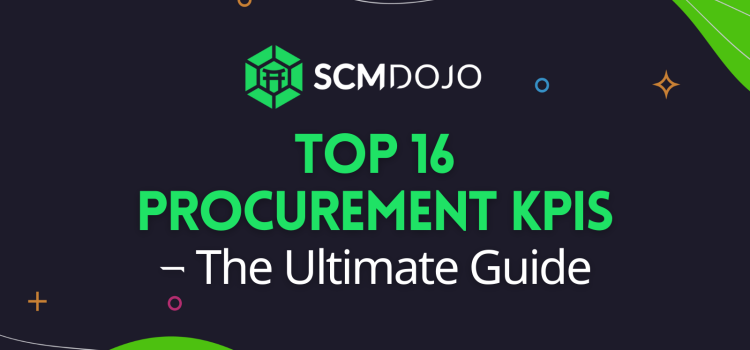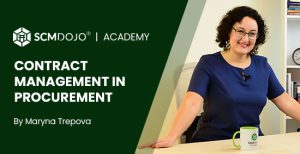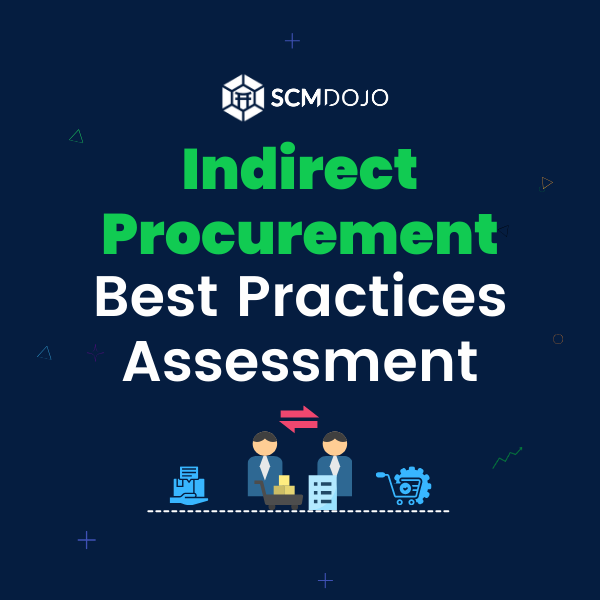Nowadays, no one can deny that businesses today expect procurement teams to drive value beyond cost savings. As a consequence, procurement leaders are constantly looking for ways to enhance their procurement process and make it more sustainable. However, they don’t want to make any decisions without the proper data. And so, they track an array of metrics such as KPIs.
Procurement KPIs (Key Performance Indicators) mean various things to different businesses, almost to the purpose that the majority of procurement leaders aren’t sure what counts as a Procurement KPIs and what doesn’t.
The procurement process is not longer the straightforward source-buy-pay cycle; it’s grown into a full-fledged business function that plays a crucial part in the business’s growth strategy. The procurement manager has his task cut out – he must monitor, measure, and manage the performance of his team.
Procurement KPIs and metrics are considered effective since it is helpful to measure the performance of the procurement team. Procurement KPIs are essential to measuring the performance of the procurement process.
Procurement leaders usually look to enhance their procurement process bank on an array of procurement metrics that help them, monitor, evaluate, manage, and improve the procurement function.
What are Procurement KPIs?
“If you cannot measure it, you cannot improve it” – Lord Kelvin.
Procurement KPIs are a sort of performance measurement tool that can evaluate and monitor the efficiency of an organization’s procurement management. These KPIs help a corporation optimize and regulate spending, quality, time, and cost.
Additionally, procurement KPIs help businesses keep in step with their overall process goals, procurement strategies, and business objectives. Measuring the efficiency of a purchase process is necessary as well since it plays a critical role within the supply chain in the case of an economic downturn.
As explained, Key Performance Indicators (KPI) are important metrics that measure specific aspects of performance. Thus, KPIs enable project teams to watch and share progress lucidly and objectively. Procurement KPIs are more granular and specific goals that are easy to trace on a monthly or daily today.
Procurement KPI Template in Excel
If you are looking for a Procurement KPI template in Excel, you can download this customizable template we have established for SCMDOJO Community.
You can also refer to the blog Top 18 Supply Chain KPIs for the Supply Chain Team and Supply Chain KPI Dashboard – Customizable Template with Example to help your supply chain teammates.
What is Supplier Performance Measurement?
According to Sherry R. Gordon, the author of “Supplier Evaluation and Performance Excellence”, Supplier Performance Management could be defined as:
“The process of evaluating, measuring, and monitoring supplier performance and suppliers’ business processes and practices for the purposes of reducing costs, mitigating risk, and driving continuous improvement.”
Managing supplier performance can help companies focus their resources on value-added activities, instead of addressing the problems caused by supplier performance (defects, rush, excessive inventory, delayed delivery to customers, shutdowns, reduced market competitiveness, etc.) reaction.
By improving performance visibility to better understand supplier performance, companies can better monitor and manage key relationships by taking measures to prevent or correct problems. And, on the positive side, they can identify and utilize suppliers with creativity and continuous improvement capabilities, and they will add value to the relationship.
The excellent performance of the supplier has brought the company a competitive advantage.
Within the scope of good supplier performance, the company can enjoy a competitive advantage, because this performance is reflected in lower costs, increased response speed to customers, high-quality goods and services, and technological advantages.
To move from the concept of managing supplier performance to managing business relationships for mutual benefit, it is not only necessary to have an in-depth understanding of supplier performance, which is usually defined as quantifiable performance indicators, but also methods and methods to achieve excellent performance through optimal business processes: Practice, and through facilitating behavior and culture.
Business relationship management needs to involve appropriate functions and use effective methods to communicate with suppliers.
For major suppliers, communication may include the exchange of information about company history, capabilities, financial and market performance, and future business plans. These communications will involve employees at multiple levels from senior management to both parties.
What are the Benefits of Performance Management using KPIs for Procurement?
- Focus on key results areas (critical success factors) such as cost reduction and quality improvement.
- Reduced conflict arising from causes such as goal confusion and unclear expectations.
- Clearly defined shared goals, facilitating cross-functional and cross-organizational teamwork and relationships.
- The ability directly to compare year-on-year performance, to identify improvement or deterioration trends.
- Increased and improved communication on performance issues.
- Motivation to achieve better the specified performance level.
- Support for collaborative buyer-supplier relations, by enabling integrated or two-way performance measurement.
What are the main Procurement KPI Categories?
Another way to define performance expectations is to identify the most important business drivers that affect your company and its customers. These business drivers are usually in the areas of cost, quality, time, and technology/innovation. Breaking down each of these drivers into supplier impact and supplier risk can help you determine what to measure.
The business drivers described in this section link the supply chain management system to market success and overall company performance and are critical to obtaining and maintaining support for supplier management.
Cost
For more and more companies, the supply chain has become the largest single source of cost and the largest opportunity for cost reduction and profitability. The hidden cost driver lies in the supply chain and may undermine the profitability and competitiveness of customers and suppliers. Identifying and eliminating cost drivers is the main goal of supplier performance management. Although cost pressures have always been an important issue, they are more of a result or side effect of the business processes that drive these processes. The best way to solve the cost drivers is to improve the business processes that drive costs within the client’s company and the supply chain.
Time
Since approximately 40% to 50% of the cycle time can be attributed to the supply chain, market responsiveness is very dependent on the supplier’s performance. Two important areas where suppliers influence cycle time are the lead time of purchased materials and the product development cycle.
For the purchasing organization, the purchased material lead time may be the longest part of the cycle time. Therefore, time-based metrics (such as on-time delivery and supplier lead time) are common metrics. But equally important is how and whether suppliers continue to solve the problems of internal cycle time and on-time delivery to customers.
Another important aspect is responsiveness. The company’s response speed to customer needs usually depends on the supplier’s response level.
Quality
It should be known that variability in terms of supplier processes can impact the standard of products and services. In businesses with high supplier content or heavy dependence on supplier services, supplier quality features a heavy impact. Responsiveness to corrective actions can fall into either quality or customer responsiveness.
When supplier failures occur within the field or at the customer, a company’s responsiveness to its customers is gated by the capabilities of its suppliers. When this failure is traced back to a sub-tier supplier, the sub-tier supplier might be unaware of the particular customs of its end products and of their warranty requirements. Thus, quality may be a cost driver.
You can refer to the Brief Guide to Supplier Quality & Supplier Development for further reading on this topic.
Technology
For many companies getting new products to plug rapidly may be considered as a key competitive opportunity. Concerning the suppliers who usually support new development strategies, these need to be qualified and measured not just from a technology capability standpoint but also from an understanding of the robustness of their internal product or service development processes. Usually, firms choose development partners without employing a formal process and with no criteria beyond good technical capabilities. They neglect to look at the whole picture: How the corporation develops products and services and whether their internal processes and practices are robust and sustainable.
Cost
Average Cost per Order
The cost of the order is one of the disputed procurement KPIs because the definition and application vary. In theory, this metric represents the typical costs of processing an order, from purchase creation to invoice closure. In practice, the prices to process internally the acquisition order can include a staggering list of variables and counting on studies.
Percentage Change in Cost vs Previous Year
Percentage change is often applied to any quantity that you simply measure over time. For instance, you’re tracking the quoted price of a security. If the worth increases, use the formula [(New Price – Old Price)/Old Price] then multiply that number by 100. If the worth decreases, use the formula [(Old Price – New Price)/Old Price] and multiply that number by 100.
Cost Avoidance: Avoid potential extra costs in the future
The second last of our procurement metrics focuses on the actions undertaken to scale back potential future costs, like replacing parts before they fail, and inevitably damage other parts. Cost avoidance creates important strategic value because it often targets strategic spending like new investments or technologies that haven’t any comparable purchase for example.
Implemented Cost Reduction: Streamline the tangible cost savings
Cost reduction is central to the procurement KPIs of the cost management dashboard. It is about the tangible “hard savings” that you simply have performed in terms of cost management over the years. Then, it is easy to measure them by comparing the old costs versus the new ones for an equivalent good or service. There are plenty of best practices to adopt to scale back the costs: you’ll streamline your supplier lifecycle management, increase efficiency by leveraging supply chain analytics, or train your staff on the way to save costs.
If you looking for cost reduction ideas, please read 27 Uplifting Cost Reduction Strategies You Should Try
Purchase Price Variance:
The price variance is that the actual cost of an item is less than its standard cost, multiplied by the number of actual units purchased. The variance shows that some costs got to be addressed by management because they’re exceeding or not meeting the expected costs. The price variance is that the actual cost of a purchased item, minus its standard cost, multiplied by the number of actual units purchased.
Procurement ROI:
It is used to determine the profitability and cost-effectiveness of procurement investment. This indicator is most suitable for internal analysis.
Procurement ROI = Annual cost savings / Annual procurement cost
Quality
Supplier Quality PPM:
The monitoring and measurement systems we have today have paved the way for improved quality. We can now control the process to control the quality. Quality cannot be inspected after the fact. It is the result of careful planning, design, and execution.
It is a measurement used by many customers to measure quality performance.
One PPM means one (defect or event) in a million or 1/1,000,000.
Supplier defect rate:
Supplier Defect Rate measures the percentage of materials or products received from suppliers that do not meet required quality or compliance specifications.
Supplier defect rate = Number of substandard products/Total number of units tested
Time
PO Accuracy:
Low PO accuracy will increase operating costs. Procurement KPIs are measured across supply categories and buyer segmentation. This indicator will help companies ensure that suppliers are delivering the ordered products and that they have delivered the products at the right time.
Tracking indicators:
- The ratio of products/services delivered outside the pre-defined service target related to the Purchase Order
- % of erroneous delivery over the total number of purchase orders in a period
Supplier Lead Time:
Supplier lead time is the time that elapses from the time the supplier receives the order to when it is shipped. The KPI is usually in days. Supplier lead time starts from ordering to the end of delivery of goods.
Supplier lead time = Delivery time (Goods and receipts delivery) – Order time (PO Receipt /Acceptance)
Purchase Order Cycle Time:
The cycle time of a purchase order is in hours or days, from the time the purchase request is submitted to the time it is sent to the seller or contractor. In other words How many days have you taken to prepare a Purchase order and submitted to the Supplier? This KPI covers the end-to-end ordering process that constitutes the entire purchase order cycle.
Vendor Availability:
Supplier availability is used to measure the supplier’s ability to respond to urgent needs. Purchasing KPIs can help organizations determine the degree of reliability that can be placed on suppliers.
Vendor availability (%) is measured by the ratio of the number of time items available on a vendor’s side to the number of orders placed with the supplier
Spend Management
There are quite a few definitions available for this Procurement KPI. Spend Under Management expenditure refers to the percentage of procurement expenditure that is controlled or controlled by the procurement management team. As the organization’s management expenditure increases, its ability to optimize costs and forecast costs also increases and this is where this Spend Under Management KPI comes in.
Another definition that explains Spend Under Management is
“the percentage of annual addressable supplier spending utilizing preferred supplier contracts.”
However, for our recommended Procurement KPI Dashboard we have used the below formula.
Spend Under Management = Total approved spend (i.e., direct, indirect, and service-related cost – maverick spend) / Total company-wide spend
Number of Suppliers:
Track your level of dependency on your suppliers
This KPI tracks the evolution of what percentage of suppliers the corporate has counting on too few suppliers and not diversifying your sources creates a risk of dependency, and potential further problems if one among them pulls out at the last moment. On the opposite hand, too many suppliers reduce the chances of discounts. The procurement KPI aside shows the evolution of the amount suppliers over the years, divided into two categories: contracted suppliers and unlisted ones.
Days Payable Outstanding:
Days payable outstanding (DPO) may be a financial ratio that indicates the typical time (in days) that a corporation takes to pay its bills and invoices to its trade creditors, which can include suppliers, vendors, or financiers. The ratio is usually calculated on a quarterly or annual basis and indicates how well the company’s cash outflows are being managed.
DPO = Accounts Payable X Number of Days / Cost of Goods Sold (COGS)
Tail Spend:
Tail spending also referred to as tail-end spending or Low-Value spending is typically left unmanaged by the organizations. In other words, small value purchases are conducted by the organizations outside of a contract. This spend is split into multiple low-value transactions with the suppliers, though the tail end comprises 80% of all the organization’s suppliers.
Purchasing KPI is a performance evaluation tool used to evaluate and monitor the efficiency of the organization’s procurement management. These KPIs help organizations optimize and manage expenditure, quality, time, and cost.
In addition, procurement KPIs can help companies keep up with their overall process goals, procurement strategies and business goals.
The process of developing procurement KPIs at a corporation isn’t always a clear-cut task. But, when procurement leaders take the time to spot their business needs and understand the character of procurement key performance indicators, it’s easy to select those which are in tune with an organization’s goals.
A cloud-based digital procurement solution can help businesses measure KPIs, gain actionable insights, mitigate risks, and increase profitability.
References
Gordon S.(2008). Supplier Evaluation and Performance Excellence: A Guide to Meaningful Metrics and Successful Results, J. Ross Publishing
https://www.datapine.com/kpi-examples-and-templates/procurement#cost-of-purchase-order
11 Essential Procurement KPIs You Must Never Ignore (kissflow.com)
About the Author- Dr Muddassir Ahmed
Dr MuddassirAhmed is the Founder & CEO of SCMDOJO. He is a global speaker, vlogger and supply chain industry expert with 17 years of experience in the Manufacturing Industry in the UK, Europe, the Middle East, and South East Asia in various Supply Chain leadership roles. Dr. Muddassir has received a PhD in Management Science from Lancaster University Management School. Muddassir is a Six Sigma black belt and founded the leading supply chain platform SCMDOJO to enable supply chain professionals and teams to thrive by providing best-in-class knowledge content, tools, and access to experts.
You can follow him on LinkedIn, Facebook, Twitter or Instagram








